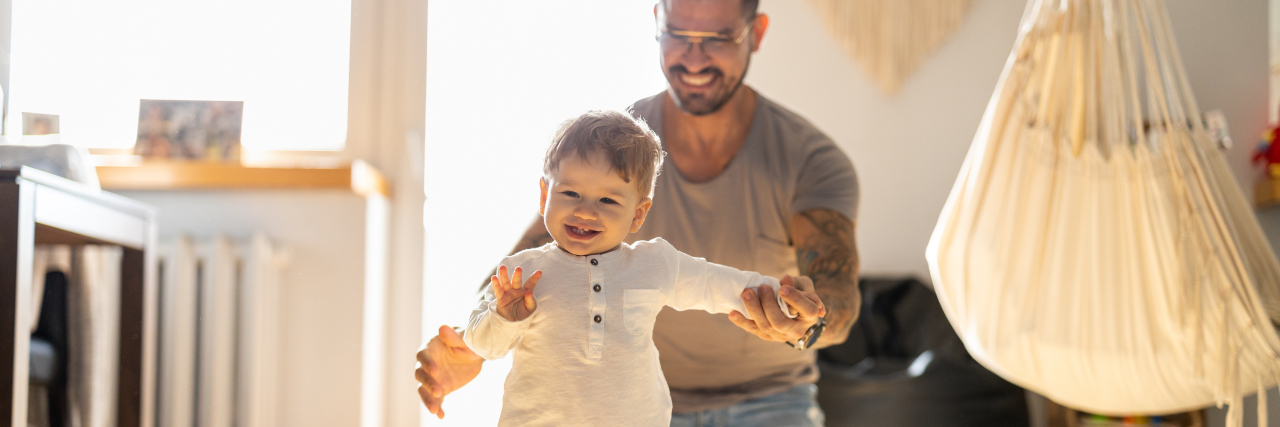I was excited as a new dad to enroll my daughter in the early toddler parent/child classes for the fall. I had experience with her newfound toddler activity level; had my anxiety, communication, and sensory overload strategies; and my plan to manage my fatigue, energy, and physical adaptations. In my head, it worked. My daughter is social, a climber, jumper, and at that time was starting to run. So, my partner and I thought the class would be a great fit especially since the description had running, balls, parachute, and music in it. My excitement was through the roof. Then in the middle of the first class, my heart sank.
As much as I thought I was prepared, I found there were activities in the class that my daughter could do but I physically could not engage in due to my physical disability and the way the activity was designed. During those moments in the class, my partner tapped in, and I watched from the sidelines. I felt defeated, excluded, and incapable as a new dad. Yet, at the same time, I felt ecstatic, proud, and joyous as I watched my daughter fully engage and have fun during the program.
After the first class, the experiences brought up the question of how we advocate for accommodations as a parent in a parent/child class for children without disabilities. Even though we had many conversations about many different topics, especially parenting and raising a child in a family with multiple dynamics of difference and disability before and after our daughter was born and we brought her home, it didn’t necessarily translate to real-time experiences such as this one. The program has a section offered to children with disabilities that provides more adaptations, but our daughter isn’t eligible for that. The paperwork required before the class all pertained to my daughter, so all the accessibility/accommodation questions regarding physical, emotional, psychological disability did not pertain to her for this class. However, they pertained to me as her parent. But there was no guidance for that. So, we naively went into the class with the assumption that I would just adapt on the spot as I do with a lot of things in our lives. But this was my first time in a parent/child class as a parent with a disability of a child without a disability and my strategies didn’t transfer as they do in other settings.
So, we emailed the instructor after the 1st class to discuss potential accommodations/activity adaptation ideas to see how I could fully participate with my daughter over the next five weeks — which would also allow her to fully participate since it is designed as a parent/child class, and I was going to be the primary one taking her. The primary strategy we got back from that discussion was the use of a chair to try at the next class, to follow up to see if it worked, and if not, activities could be adapted further. The chair worked well for the opening and closing circle, but not for the 10-minute parachute activity, so we communicated that more adaptations would be needed especially since the chair posed a safety issue during the parachute activity. However, no further adaptations, accommodations, or communications followed except for continuing to try the chair. So, I ended up having to take my daughter out to a different location during that class activity and return when it was over.
It felt like my physical disability was excluding my daughter from being able to fully participate in the class. The reality is the class is a parent/child class and the activity was not made accessible or safe due to lack of adequate accommodations that would allow me to participate with my daughter, and she is required to participate with a parent/adult due to her age. This was our official first exposure to this challenging experience and dynamic, but we know it is not going to be the last.
Some days are full of wins. Some days feel defeating. Every night since, I have been kept up wondering: what does equity look like in these settings? How do we advocate for accommodations? How do we navigate ensuring programs and environments are accessible? What does this look like in parent/child programs when a parent has a disability, and the child does not, or if both the parent and the child have a disability? Honestly, I’m not sure. For our family unit, we are still in conversations and navigating what this looks like across different settings, including the next six-week session of the program. It is a part of our journey as a family.
Getty image by Piksel.

